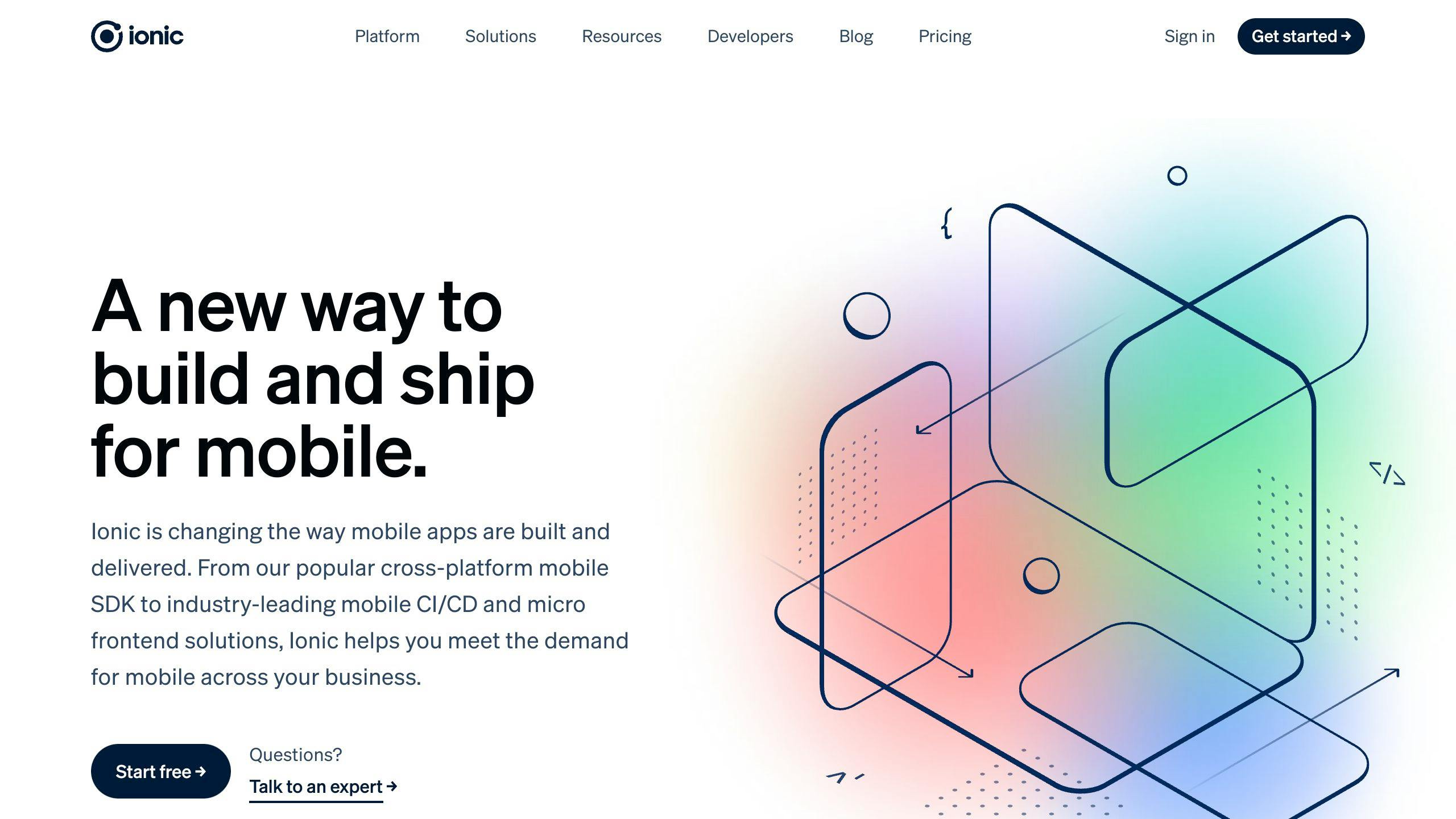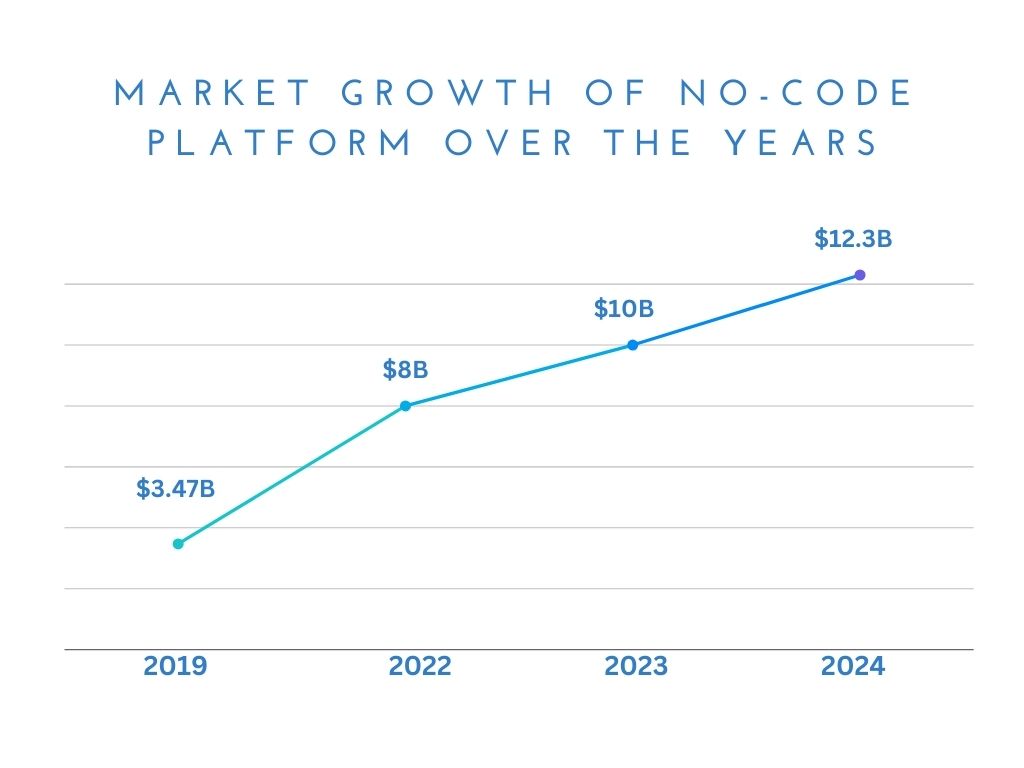Building scalable enterprise applications is crucial for businesses to handle growth and meet increasing user demands. This article outlines 10 key practices to achieve scalability:
- Modular Architecture: Break down the application into smaller, independent modules that can scale individually.
- Cloud Technologies: Leverage cloud platforms to easily adjust resources based on needs.
- Caching Strategies: Implement caching to reuse data, improving performance and reducing costs.
- Database Performance: Optimize queries, indexing, and caching for faster data retrieval.
- Asynchronous Processing: Run multiple tasks simultaneously for better responsiveness.
- Load Balancing: Distribute traffic across multiple servers to prevent overloading.
- Automated Deployment and Monitoring: Ensure consistency and reduce errors through automation.
- Performance Testing: Simulate real-world scenarios to identify and address bottlenecks.
- Fault Tolerance and Resilience: Keep the system running even if components fail.
- Continuous Improvement: Foster a culture of innovation and learning to stay competitive.
By following these practices, enterprises can build applications that can withstand the challenges of growth, meet changing user needs, and stay ahead of competitors.
Related video from YouTube
1. Adopt a Modular Architecture
Adopting a modular architecture is a key practice for designing scalable enterprise apps. This approach involves breaking down the application into smaller, independent modules that can be developed, tested, and deployed separately. Each module focuses on a specific functionality or feature, making it easier to maintain, update, and scale individual components without affecting the entire system.
Benefits of Modular Architecture
BenefitDescriptionImproved scalabilityScale individual modules independently, allowing efficient resource allocation.Faster developmentParallel development and deployment of modules reduce overall development time.Enhanced maintainabilitySmaller, independent modules make it easier to identify and fix issues.Better reusabilityPromotes code reusability, reducing the need to duplicate code.
Tips for Implementing Modular Architecture
- Define clear module boundaries: Identify the specific functionality or feature each module will provide and ensure that each module has a clear, well-defined interface.
- Encapsulate module dependencies: Minimize dependencies between modules to reduce coupling and improve scalability.
- Use standardized interfaces: Establish standardized interfaces between modules to ensure seamless communication and reduce integration complexity.
2. Leverage Cloud Technologies
Using cloud technologies is key for building scalable enterprise apps. Cloud platforms offer resources like virtual servers, networking, storage, and runtime environments. This allows developers to scale up or down based on business needs, ensuring smooth growth and consistent user experiences.
Benefits of Cloud Technologies
BenefitDescriptionEaseAdjust capacity with a few clicks.SpeedQuickly configure infrastructure to meet changing demands.Cost-effectivenessPay only for the resources used.ReliabilityHandle sudden demand changes, ensuring high performance.
3. Implement Caching Strategies
Implementing caching strategies is key for building scalable enterprise applications. Caching allows you to reuse previously retrieved or computed data, reducing the need to access slower storage layers. This results in better performance, lower database costs, and higher read throughput.
Benefits of Caching
BenefitDescriptionImproved PerformanceFaster data retrieval and reduced latencyReduced Database CostsLower database load and reduced costsIncreased Read ThroughputHandle higher traffic and user loads
Caching Strategies
- In-Memory Caching: Use systems like Redis or Memcached to store frequently accessed data.
- Cache Expiration: Set a time-to-live (TTL) for cached data to keep it up-to-date.
- Cache Invalidation: Remove cached data when the underlying data changes.
- Cache Fallback Strategies: Handle cache misses or failures with fallback plans.
- Distributed Caching: Scale caching across multiple nodes using distributed systems.
4. Optimize Database Performance
Optimizing database performance is key for scalable enterprise applications. A well-performing database ensures faster data retrieval, reduced latency, and better system responsiveness. Here are some strategies to optimize database performance:
Optimize Database Queries
Improving database queries is essential for better performance. This involves refining queries to reduce execution time and resource use. Techniques like query caching, indexing, and optimizing SQL statements can help.
Use Efficient Database Indexing
Database indexing helps in faster data retrieval. By creating efficient indexes, you can reduce query execution time and improve overall database performance.
Implement Database Caching
Database caching stores frequently accessed data in memory or other fast storage. This reduces the load on the database server and improves response times. Strategies like query result caching, fragment caching, and full-page caching can help.
Monitor and Analyze Database Performance
Monitoring and analyzing database performance helps identify bottlenecks. Track key performance indicators like query execution time, CPU usage, and disk I/O. Analyzing these metrics can highlight areas for improvement.
Regularly Update and Maintain the Database
Regular updates and maintenance are crucial for optimal performance. This includes updating database software, applying security patches, and performing regular backups. Keeping the database up-to-date helps prevent performance issues.
Summary of Strategies
StrategyDescriptionOptimize QueriesRefine queries to reduce execution time and resource use.Efficient IndexingCreate indexes for faster data retrieval.Database CachingStore frequently accessed data in memory.Monitor PerformanceTrack and analyze key performance indicators.Regular MaintenanceUpdate software, apply patches, and perform backups.
5. Embrace Asynchronous Processing
Asynchronous processing is important for designing scalable enterprise applications. It allows multiple tasks to run at the same time, improving system responsiveness and reducing delays. By using asynchronous processing, your application can handle many requests without losing performance.
Benefits of Asynchronous Processing
BenefitDescriptionImproved PerformanceMultiple tasks run at the same time, leading to faster response times.Better Resource UseThe CPU can work on other tasks while waiting for I/O operations to complete.Enhanced User ExperienceThe UI remains responsive even while background tasks are running.ScalabilityCan handle many concurrent operations without overwhelming the system.
Real-World Example
In an e-commerce application, when a user places an order, the system can process the payment, update the inventory, and send a confirmation email all at the same time. This keeps the user interface responsive and allows the system to handle multiple orders without delays.
sbb-itb-8abf120
6. Implement Load Balancing
Implementing load balancing is key for designing scalable enterprise applications. Load balancing distributes incoming traffic across multiple servers, ensuring no single server becomes overwhelmed and improving application performance and availability.
Benefits of Load Balancing
BenefitDescriptionImproved ScalabilityEasily add or remove servers without disrupting the application.Enhanced AvailabilityAutomatically route traffic to healthy servers if others fail.Increased PerformanceDistribute traffic efficiently, reducing the burden on individual servers.
Load Balancing Algorithms
AlgorithmDescriptionRound RobinEach request is sent to the next available server in sequence.Weighted Round RobinRequests are distributed based on server weights.Least ConnectionsRequests are sent to the server with the fewest active connections.RandomRequests are randomly distributed across available servers.
7. Automate Deployment and Monitoring
Automating deployment and monitoring is key for designing scalable enterprise applications. Manual deployments can be error-prone, time-consuming, and may lead to inconsistencies across different environments. By automating deployment and monitoring, you can ensure consistency, reduce errors, and increase productivity.
Benefits of Automated Deployment and Monitoring
BenefitDescriptionConsistencyAutomated deployments ensure consistency across different environments.Reduced ErrorsAutomated deployments minimize the risk of human error.Increased ProductivityAutomated deployments free up resources, allowing teams to focus on development.
Automated Deployment Strategies
Automated deployment strategies can be categorized into two main types: Continuous Delivery and Continuous Deployment. Continuous Delivery allows for manual control over when changes are deployed, while Continuous Deployment automatically deploys successful changes to production. The choice of strategy depends on factors such as the organization's requirements, risk tolerance, team maturity, and the nature of the software being developed.
8. Conduct Performance Testing
Conducting performance testing is a key step in designing scalable enterprise applications. It helps find bottlenecks, ensures the system can handle expected loads, and provides insights for optimization. Performance testing involves simulating real-world scenarios to evaluate the system's response time, throughput, and resource use.
Types of Performance Testing
TypeDescriptionLoad TestingChecks the system's behavior under normal and peak loads.Stress TestingPushes the system beyond its limits to find breaking points.Soak TestingAssesses the system's performance over a long period.Spike TestingSimulates sudden increases in load to see how the system responds.
Best Practices for Performance Testing
To get the most out of performance testing, follow these best practices:
- Change one variable at a time: Ensure accurate results by only changing one variable at a time.
- Reset the system between tests: Avoid skewed results by resetting the system between test runs.
- Run multiple tests: Ensure consistency and identify trends by running multiple tests.
- Set realistic benchmarks: Establish achievable goals based on business needs.
- Think like a user: Evaluate performance from the user's perspective to meet their expectations.
9. Implement Fault Tolerance and Resilience
Implementing fault tolerance and resilience is crucial for scalable enterprise applications. Fault tolerance means a system can keep working even if some parts fail. This is done by having backup components that can take over instantly.
Strategies for Fault Tolerance
StrategyDescriptionLoad BalancingDistribute traffic across multiple servers to avoid overloading any single server.RedundancyKeep identical copies of critical components, like databases or servers, to take over if one fails.Error Detection and CorrectionDetect and fix errors in real-time to minimize the impact of failures.
10. Foster a Culture of Continuous Improvement
Creating a culture of continuous improvement is key for scalable enterprise applications. This means encouraging innovation, experimentation, and learning. By doing this, organizations can stay competitive, meet changing user needs, and grow.
How to Foster Continuous Improvement
ActionDescriptionEncourage CreativitySet aside time for brainstorming and exploring new ideas.Embrace FailureView failures as learning opportunities and not setbacks.Promote CollaborationFoster teamwork and open communication.Provide ResourcesOffer tools and support for new projects and ideas.Recognize ContributionsReward and acknowledge innovative efforts.
Benefits of Continuous Improvement
BenefitDescriptionCompetitive EdgeStay ahead of competitors by constantly improving.User SatisfactionMeet and exceed user expectations.Business GrowthDrive growth through continuous enhancements.
Summary
Scalable enterprise app design is crucial for businesses to handle growth and increased user demands. By following the 10 best practices outlined in this article, enterprises can build applications that can withstand the challenges of the digital age. From adopting a modular architecture to encouraging continuous improvement, these strategies will help businesses stay competitive, meet changing user needs, and grow.
PracticeKey PointsModular ArchitectureBreak down the app into smaller, independent modules.Cloud TechnologiesUse cloud platforms for flexible resource management.Caching StrategiesReuse data to improve performance and reduce costs.Database PerformanceOptimize queries, indexing, and caching.Asynchronous ProcessingRun multiple tasks simultaneously for better responsiveness.Load BalancingDistribute traffic across multiple servers.Automated Deployment and MonitoringEnsure consistency and reduce errors.Performance TestingSimulate real-world scenarios to find bottlenecks.Fault Tolerance and ResilienceKeep the system running even if parts fail.Continuous ImprovementEncourage innovation and learning to stay competitive.
FAQs
Which architecture pattern is used to achieve high scalability?
Scalable enterprise applications often use a microservices architecture pattern. This pattern breaks the application into smaller, independent services that can be developed, deployed, and scaled separately. Microservices architecture offers flexibility, resilience, and scalability, making it a popular choice for large-scale enterprise applications.
Other architecture patterns like event-driven, layered, and microkernel can also help achieve scalability, depending on the application's needs. However, microservices are widely favored for their ability to provide high scalability and maintainability.
Choosing the right architecture pattern depends on various factors, including the application's requirements, the team's expertise, and the organization's goals. It's important to evaluate the pros and cons of each pattern before making a decision.

.png)















